|
Displaying items by tag: european
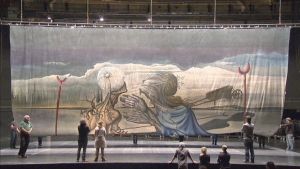
This past Sunday, Montreal's Place des Arts and the stage troupe Finzi Pasca unveiled a mural by Salvador Dali that has remained out of public view for sixty years. Measuring 29 ½ feet by 40 feet, the backdrop was painted for the 1944 ballet production “Le Tristan Fou (Mad Tristan),” a take on “Tristan und Isolde,” while the Surrealist artist was in exile in New York. The backdrop made an appearance in London in 1949 and then fell out of sight until an anonymous European foundation re-discovered it three years ago.
The rare piece was restored but rather than exhibit it in a museum of gallery, the foundation offered it to theater creator and circus master Daniele Finzi Pasca for use in an upcoming acrobatic stage production. Pasca decided to incorporate the painting into “La Vérità,” a story inspired by “Tristan und Isolde” as well as Dali’s exile, the 1940s cabaret scene, and the Dali’s wife and muse, Gala.
Members of the public can take a closer look at the Dali backdrop at Théâtre Maisonneuve in Place des Arts on Wednesday, November 7. La Vérità, featuring the Dali backdrop will premiere at the theater on January 17, 2013.
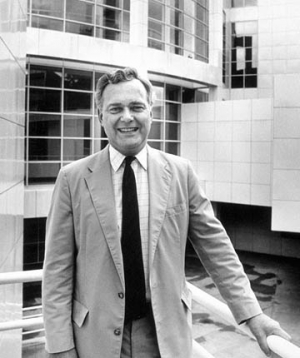
When Gudmund Vigtel was named the High Museum of Art’s director in 1963, it was a sensitive time for Atlanta’s art world. More than 100 members of the Atlanta Arts Association and their family members had died the year before in a tragic plane crash. The city’s civic leaders hoped that Vigtel could turn the museum into a living monument of sorts.
Vigtel came to the High Museum from the Corcoran Gallery of Art in Washington where he served as the assistant director. Civic leaders turned to Vigtel to spearhead the fund-raising campaign they started with hopes of remaking the museum. As it turns out, they chose the right man for the job.
During his 28 years at the High Museum, Vigtel transformed it from an unsuspecting, modest institution to one of the U.S.’s most renowned art museums. Vigtel oversaw the museum’s move from a small brick building to an architecturally groundbreaking 135,000-square-foot postmodern structure designed by Richard Meier. While the relocation happened in 1983, Vigtel began fund-raising and seeking out an architect in the mid-1970s.
Vigtel tripled the size of the High’s permanent collection and implemented an art appreciation program for children. He also started one of the country’s first African-American art collections. The decorative arts collection he opened at the museum has gone on to become one of the finest in the country. After acquiring hundreds of works by 19th- and 20th-century American and European artists, Vigtel left the High Museum with a $15 million endowment, which has since grown.
Vigtel died at his home in Atlanta at the age of 87. His wife, two daughters, four grandchildren, and a profound legacy survive him.
U.S. Immigration and Customs Enforcement (ICE) returned more than 4,000 pieces of looted cultural artifacts to the Mexican government. A repatriation ceremony was held on October 25 at the Consulate of Mexico in El Paso, Texas. The items were recovered in El Paso, Phoenix, Chicago, Denver, San Diego, San Antonio, Fort Stockton, Texas, and Kalispell, Montana. Many of the artifacts that were found in Texas traced to a 2008 theft from a museum in Mexico. Five pre-Columbian statues, over 4,000 pre-Columbian artifacts, and 26 pieces of pre-Columbian pottery were returned to the people of Mexico.
The repatriation that took place on Thursday is one of the largest that has taken place between the two countries. Many of the items returned date from before European explorers landed in North America. The items will be taken to the National Institute of Anthropology and History in Mexico City where they will be studied, cataloged, and distributed to museums across Mexico.
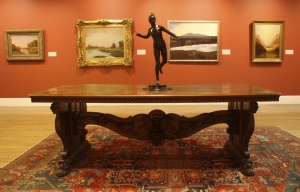
After twenty-two years, Nicholas Capasso will be leaving his post at the deCordova Sculpture Park and Museum in Lincoln, MA. Capasso, who is currently the deCordova’s deputy director for Curatorial Affairs, has been named the new director of the Fitchburg Art Museum and will start his latest venture on December 3.
During his time at the deCordova, Capasso has overseen a permanent collection that included 3,500 objects, changing gallery exhibitions, and an outdoor sculpture park. He helped to bring recognition to the institution and to reposition it as an important contemporary museum.
While Capasso specializes in contemporary art, he is eager to work with the Fitchburg Art Museum’s collection that spans more than 5,000 years and includes American and European paintings, prints, drawings, ceramics, decorative arts, and Greek, Roman, Asian, and pre-Columbian antiquities. The Museum’s collection, which is housed between twelve galleries, includes works by William Zorach, John Singleton Copley, Joseph Stella, Edward Hopper, Charles Burchfield, Charles Sheeler, Walker Evans, and Georgia O’Keeffe.
Capasso will take over the role of director from the soon-to-be-retired Peter Timms who has held the position since 1973.

Held from November 7th to 12th at the Palais de la Bourse, Paris Tableau will try to outdo last year’s inaugural show, which saw over 6,000 patrons and sold 60 major paintings.
Centered on Old Master Paintings ranging from the Middle Ages to the Second Empire, Paris Tableau was created by ten dealers – Maurizio Canesso, Hervé Aaron, Eric Coatalem, Bertrand Gautier, Bob Haboldt, Jean-François Heim, Georges de Jonckheere, Jacques Leegenhoek, Giovanni Sarti and Claude Vittet – who all share the same vision. While multi-discipline art fairs are currently commonplace, the dealers felt a fair dedicated solely to Old Masters was both needed and desired by collectors, curators, and fans.
This year’s Paris Tableau will host a loan exhibition from Le Mobilier National (The National Furniture Museum of France). Curated by Arnauld Brejon de Lavergnée, the former Director of Collections at Le Mobilier National, Hidden Treasures of the Goblins, will feature approximately 20 paintings and painted cartoons, some of which have never before been on public display. The point of the exhibition is to illustrate the link between paintings and its translation into textiles for interior use.
A festival of iconic films that thematically explore Old Master Paintings will also be part of Paris Tableau. Held from November 9th to 10th, the festival features such films as Rembrandt, Nightwatching, The Mill and the Cross, and The Girl with a Pearl Earring.
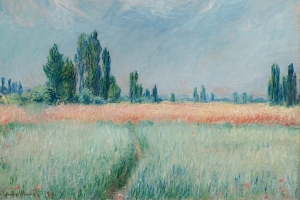
On November 5th, the Cleveland Museum of Art will auction off one of its six Claude Monet paintings in New York. Wheat Field (1881) carries an estimated price of $5–$7 million and the museum hopes to use the funds from the sale to strengthen its early 20th century European painting and sculpture collection, an area that has been lacking.
The Museum decided to auction Wheat Fields shortly after David Franklin was named the Museum’s director in 2010. Franklin did not think the painting could hold its own next to to the other five Monets in the museum’s collection including a widely admired Water Lily painting and the seminal, Red Kerchief.
Since Wheat Field was donated to the museum in 1947 as an unrestricted gift of Mrs. Henry White Cannon, the museum is able to sell the painting without fear of complaint from the donor’s family. The Museum would like to acquire a painting by The Scream artist, Edvard Munch, or Wassily Kandinsky, the pioneering Russian abstractionist, to help round out their collection.
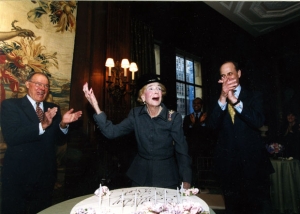
Before her death in 2007, Brooke Astor was a fixture in New York City’s elite inner circle. A tireless philanthropist and champion of the arts, Astor left behind a legacy marked by kindness, generosity, and good taste.
Sotheby’s has announced an auction of the contents of two of Astor’s estates – her legendary Park Avenue duplex and her country estate, Holly Hill, in Briarcliff Manor, NY. A total of 901 items including European and Asian furnishings, Old Master paintings, Qing Dynasty paintings, tea sets, silverware, jewelry, a porcelain menagerie, and over 100 dog paintings will head to the auction block September 24–25. Per Astor’s request, proceeds from the sale will go to the institutions and causes she held dear including the New York Public Library, the Metropolitan Museum of Art, the Bronx Zoo, Central Park, the Animal Medical Center of New York, New York City’s public school system, and a number of charities in Maine. Sotheby’s expects the sale to bring in between $6 and $9 million for the entire collection.
An icon of New York society and refinement, Astor spent her final years suffering from dementia. After her death at 105, her estate remained in limbo due a family dispute that lasted five years. The feud ended in March of 2012 and $100 million of Astor’s estate was freed for her charities. The amount going to Anthony Marshall, her only son, was cut by more than half as he was convicted of taking advantage of his mother’s deteriorating mental state and altering her will to his advantage.
Among the most coveted of Astor’s pieces that will be headed to Sotheby’s are an Imperial Chinese gilt-bronze lion clock slated to bring in around $180,000–$220,000 and an emerald and diamond necklace with earrings estimated at $280,000– $390,000 for both.
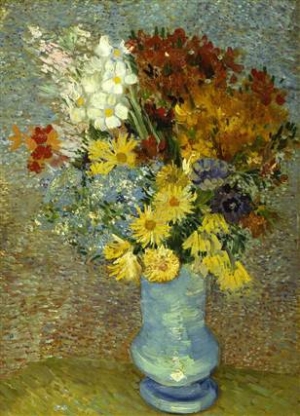
When Vincent van Gogh painted Flowers in a Blue Vase in 1887 in Paris, he chose a bright, cheery yellow for the flowers. As years passed, the vivid hue faded to a dull orange-gray and scientists have just found out that a coat of protective varnish is to blame.
After van Gogh’s death in 1890, the varnish was applied to preserve the work, a common practice at the time. However, when the paint mixed with the varnish, a chemical reaction occurred causing the colors to change.
Something seemed awry back in 2009 when Margje Leeuwestein, painting conservator at the Kröller-Müller Museum in the Netherlands, attempted a conversation treatment on the piece. An unusual gray crust containing cadmium yellow paint formed on the surface, signaling that they were dealing with more than just aging varnish which is known to darken over time.
As the painting had become increasingly brittle, experts at the Kröller-Müller Museum carefully took two microscopic paint samples from the original work and used X-ray beams to determine the chemical composition and structure where the paint and varnish met. A lead-sulfate compound, the result of photo-oxidation that separates cadmium and sulfate ions from that particular paint, was revealed. The researchers deduced that the negatively charged sulfate ions hooked up with the lead ions in the varnish to form anglesite, an opaque lead-sulfate compound that caused the color to transform.
By keeping the painting in lower light conditions and using more advanced varnish, the deterioration should be halted. The surprising findings will be chronicled in the upcoming issue of the scholarly journal, Analytical Chemistry.
Art fairs like the Paris Biennale, opening Friday, bring out the two salient features of the new art market: Prices are nearly all beyond the reach of average budgets, and most of the youngest dealers are already in their 40s or 50s.
World records tumbled during the past season, prompting lyrical celebrations in the news media. Auction houses love it. Should we too, seeing the records as homage paid by growing numbers of art lovers? Hardly. Seemingly paradoxical in recessionary times, records merely highlight the huge price rise of the art of the past over five decades.
True, this increase has not been uniform. Even as records are being set, wild estimates fail to be matched and some works sell at levels that leave their consignors with severe losses.
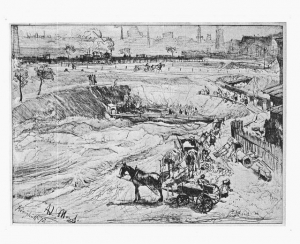
The great-granddaughters of the German-Jewish painter Max Liebermann are growing impatient with Berlin museum authorities about two drawings from his collection they say were lost as a result of Nazi persecution.
The drawings by Adolph Menzel in the Kupferstichkabinett in Berlin are among thousands of works that Liebermann’s heirs are trying to recover. Liebermann was not only one of the most famous German Impressionists; he was also a great collector. Works by Edouard Manet, Edgar Degas, Claude Monet and Auguste Renoir adorned his imposing home next to the Brandenburg Gate.
Forced to resign as honorary president of the Prussian Academy of Arts after the Nazis took power, Liebermann died isolated and embittered in 1935, leaving his estate to his widow. She sold some artworks to pay the rent and buy food and medicine before committing suicide in 1943.
“For the heirs, it’s difficult to understand why public institutions are so hesitant,” said Georg Castell of Heinichen Laudien von Nottbeck Rechtsanwaelte in Berlin, the lawyer representing the great-granddaughters. “Without cooperation from the museums, we can’t get very far.”
|
|
|
|
|